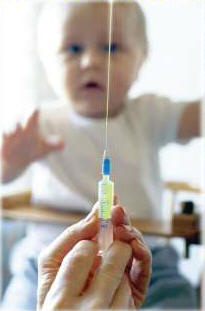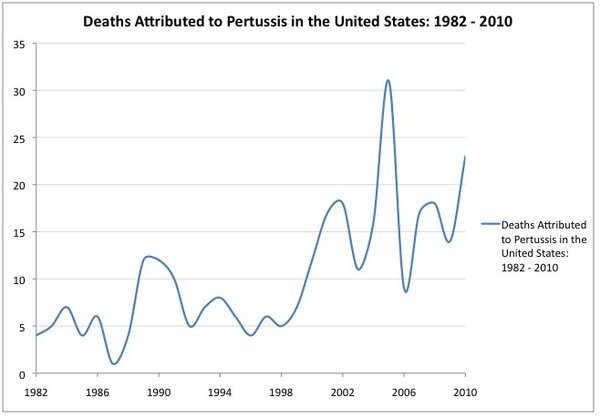In 2010, California experienced its worst outbreak of whooping cough in 50 years. As usual, the mainstream media blamed unvaccinated people for the outbreak, yet 44 to 83 percent of those diagnosed with whooping cough in California had been vaccinated against whooping cough.
Since the 1980s, the incidence of pertussis (whooping cough) has been rising, and this resurgence is not related to vaccine refusal. The pertussis rates in California are the same as other US states with higher and lower vaccine rates. According to the CDC, vaccination rates for pertussis in the US have been steady or even on the increase since 1992.

Other areas besides California have experienced this phenomena of whooping cough occurring in heavily vaccinated populations. In Oxford, England, between 2001-2005, 90% of children who contracted whooping cough were fully immunized. During a 2005-2006 outbreak in Toronto, Canada, over 90% of children who contracted whooping cough were fully up to date on their immunizations. During a 2009 outbreak in Hunterdon County, New Jersey, all children who contracted whooping cough had been immunized. During a recent outbreak in Texas and Ohio, between 67-75% of children had been immunized. In Long Island during a 2011 epidemic, all infected children were vaccinated.
In Finland, where the vaccine coverage rate is 98%, a nation wide study of children infected with pertussis between 1994-1997 concluded that pertussis outbreaks can indeed occur in fully vaccinated populations. A study of a 2004 outbreak in Slovenia reveals that all children who became infected with pertussis were fully vaccinated. And last but not least, another example of the ineffectiveness of the pertussis vaccine: during a 1996 pertussis outbreak in the Netherlands, infection rate was actually higher among those who were vaccinated for the disease.

Unvaccinated children have become the scapegoat for pertussis outbreaks, but this belief is not based in reality. According to Dutch scientist Dr. Fritz Mooi, the most obvious culprit is the waning effectiveness of the pertussis vaccine. The answer to the problem, posited by the mainstream press, is to add more booster doses to the vaccination schedule. However, Dr. Mooi’s research into the real reason behind waning vaccine immunity concludes that there is now a new, more virulent strain of whooping cough that is resistant to the pertussis vaccine.
The logical answer to the problem would be to develop a new vaccine that would protect against this new pertussis strain. But Dr. Mooi says, “There is little incentive for pharmaceutical companies to pursue a new vaccine because it would cost billions.”
An increase in pertussis vaccination coverage is associated with rising incidence of parapertussis infection. The symptoms of parapertussis infection are virtually identical to pertussis infection, thus an MD could easily misdiagnose parapertussis as pertussis. There currently is no vaccine that protects against parapertussis. A recent study found that the risk of parapertussis infection was 40 times as likely in mice that were immunized with the pertussis vaccine.
Interested in safe, effective and natural ways to boost the immune system? Click Here Learn More About Homeoprophylaxis/Nosodes
References
Immunized People Getting Whooping Cough, Experts Spar Over New Strain
Outbreaks Proof that Whooping Cough Vaccines Don’t Work
Vaccination is Steady, But Pertussis is Surging
Whooping Cough Kills 5 in California – State Declares an Epidemic
Whooping Cough Outbreaks in Vaccinated Children Become More and More Frequent
